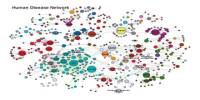A new study using single-cell technology sheds light on the significance of genetic risk factors for the development of coronary artery disease, as well as the diversity of cells involved. The researchers examined human atherosclerotic lesions to map the accessibility of chromatin in over 7,000 cells. It is well known that chromatin accessibility reflects active regions and genes in the genome. Circulation Research published the findings.
Genome-wide correlation Over 200 loci associated with coronary artery disease has been identified through studies of the human genome. More than 90% of them are found outside of protein-coding genes, in what is known as cis-regulatory elements, the significance of which in the pathogenesis of coronary artery disease is unknown.
Despite significant disparities based on socioeconomic status and gender, cardiovascular disease (CVD) is regarded as the leading cause of death in all countries. Over the last century, there has been significant progress in the diagnosis, prevention, and treatment of various fields of cardiovascular medicine, which has resulted in lower global and cause-specific mortality.
Using single-cell technology, a new study sheds light on the significance of genetic risk factors for, and the diversity of cells involved in, the development of coronary artery disease.
Previous research has shown that the development of coronary artery disease involves a wide range of cells and cell subtypes. The study, which has just been published, is the first to use single-cell technology to map epigenetic changes in these cells. The ATAC-seq sequencing method was used by the researchers to discover the nuclear chromatin structure of endothelial cells and smooth muscle cells, as well as immune system monocytes, macrophages, NK/T and B cells, providing a unique resource to study the cell-type-specific activity of the disease-affected vessel wall cis-regulatory elements.
Gene regulation disruption is a major contributor to cardiovascular disease, the leading cause of morbidity and mortality worldwide. Cis-regulatory elements like enhancers and promoters are essential for controlling gene expression. Heart disease can be caused by mutations in transcription factors and chromatin regulators, and genetic variants associated with cardiovascular disease risk are enriched within annotated candidate cis-regulatory elements (cCREs) in the human genome.

Coronary artery disease (CAD) and its most serious complication, myocardial infarction (MI), are among the leading causes of death in the developed world. The disease is caused by both genetic and environmental factors, and recent genome-wide association studies have identified approximately 200 risk loci for CAD.
The vast majority of such variants, however, are found in non-coding regions of the genome and have no known biological function. Even though the functional characterization of such variants has been difficult in the past, understanding the variants’ functions is now possible thanks to new and advanced genomics techniques such as RNA-seq, ChIP-seq, STARR-seq, and HiC, as well as computational analysis.
The study found that genetic risk variants associated with coronary artery disease are particularly rich in cis-regulatory elements specific to endothelial and smooth muscle cells, indicating that these cells play an important role in transmitting disease susceptibility. The researchers were able to identify putative target genes for approximately 30% of all known loci associated with coronary artery disease using chromatin accessibility mapping and gene expression data.
Furthermore, the researchers used genome-wide experimental fine-mapping to identify potential causal single-nucleotide polymorphisms and the associated target gene for over 30 loci linked to coronary artery disease. The study also provided several examples of how chromatin accessibility and gene expression data can be used to predict target cells through which the function of the disease-associated genetic changes is transmitted in the tissue.
This is an important step forward in understanding the true functional significance of risk variants in the pathophysiology of coronary artery disease. This data can be used to develop more effective, safer, and personalized treatments for coronary artery disease in the future.
















